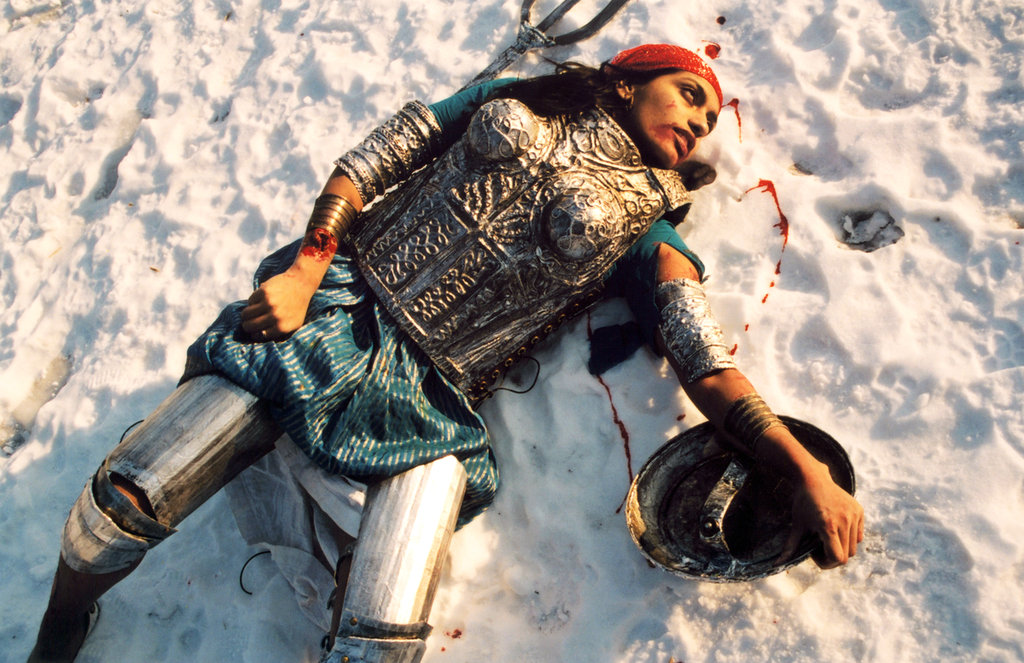‘Her Stories’ | ‘Fifteen Years of the South Asian Women’s Creative Collective’
ART & DESIGN | ART IN REVIEW
‘Her Stories’
‘Fifteen Years of the South Asian Women’s Creative Collective’
By HOLLAND COTTER AUG. 16, 2012
“The Awakening,” by Chitra Ganesh. CreditQueens Museum of Art
Queens Museum of Art, New York City Building
Flushing Meadows-Corona Park
Through Oct. 7
The South Asian Women’s Creative Collective was founded by the artist Jaishri Abichandani in New York City in 1997, when identity politics was in the air, but artists from much of the Asian diaspora were still being given the cold shoulder by the art world here. By providing strength-in-numbers support and access to resources, the collective helped move a generation of artists ahead, as this small power generator of an anniversary survey demonstrates.
Ingeniously packed, floor to ceiling, into the Queens Museum of Art’s lobby gallery, the show is made up of work by dozens of artists, some of them original collective members, others recent arrivals. Shared features include a feminist perspective, an activist spirit and a resistance to melting pot assimilation. Beyond that, though, formal variety is what’s most striking.
Ethnic stereotypes are deftly punctured in Jayna Mistry’s strenuously exotic fashion photos and in Meenakshi Thirukode’s film in progress of art world striving. Chitra Ganesh’s mesmerizing warrior-goddess self-portraits; Samira Abbassy’s dark-skinned fetish figures; and Ms. Abichandani’s photographic self-image as an extraterrestrial all give the concept of “undocumented alien” a new meaning.
An installation view of “Her Stories: Fifteen Years of the South Asian Women’s Creative Collective,” at the Queens Museum of Art. CreditJaishri Abichandani/Queens Museum of Art
The definition of South Asia is stretched, too — Ms. Abbassy was born in Iran, Ms. Mistry in South Africa — as are formal categories. Sculpture means tiny creatures woven from dryer lint by Marcy Chevali, but also Ruby Chishti’s life-size figure of a water buffalo with a plumbing fixture for a head.
In Bhanu S. Palam’s paintings, humble houses look like shrines; in Yamini Nayar’s photographs, tabletop tableaus look monumental. Craft, quality and preciousness are alternately respected and dismissed. Ideas are everywhere.
The South Asian Women’s Creative Collective has made common cause with similar groups devoted to music, dance and literature. These disciplines have been integrated into the show — organized by Ms. Abichandani and Josheen Oberoi — in videos of performances (by Arooj Aftab, Parijat Desai, Sonia Kumari Mehta, Parul Shah and Samita Sinha), and in a mini-library of recently published books for browsing.
At 15, the collective is still growing, attracting new members. The need for it has not significantly diminished. Only, it seems, within the increasingly isolationist and hermetic New York art establishment are certain questions — about who we are, where we came from and where we’re going — out of style. In the rest of the world these continue to be vital inquiries, as suggested by this cosmopolitan celebration.
A version of this review appears in print on August 17, 2012, on Page C28 of the New York edition with the headline: ‘Her Stories’: ‘Fifteen Years of the South Asian Women’s Creative Collective’.



